We grow on our own large tomatoes with sweet, juicy, grainy pulp: Tomato "Buffalo Heart"
Breeding activity is actively moving forward, expanding the variety of tomato crops and surprising farmers with the latest varieties with interesting properties. Our detailed review of the innovative Buffalo Heart tomato contains characteristics and descriptions of the variety, yield indicators, photographs of ripe tomatoes.
The variety is distinguished by simple agricultural technology and incredible resistance to diseases of the Solanaceae family. And the reviews of those who planted the Buffalo Heart will allow you to be convinced of its merits on real examples.
The content of the article
Description of the variety
The species was bred by Siberian breeders in the XXI century. Its main feature is adaptation to any climatic conditions, which makes it possible to grow it in all regions of our country. Not hybrid. Recommended for growing both in a greenhouse and in the open field.
Bush determinant, undersized. Height up to 80 cm, in greenhouses it grows up to 1 m. The stem is weak, there are few leaves. In terms of ripening, it belongs to the mid-season. Fruiting in 105 -115 days after the appearance of the first shoots. Summer residents receive ripe tomatoes in July.
The yield is high, 4-5 fruits are tied in one brush. From 1 bush, you can collect at least 7 kg of vegetables.
Needs pinning. The plant is formed into 2 stems.
Possesses high resistance to diseases, practically not susceptible to attacks of infections and pests.
Fruits are large, weight from 500 g to 1 kg. The shape is rounded-heart-shaped, pink with a raspberry tinge. The pulp is dense, juicy. There are few seeds. The rind is smooth, thin. The taste is sweet with a slight sourness.
The crop is stored for a long time, tolerates long-term transportation well.
In cooking, it is used in a variety of salads, retains its taste in tomato paste, juices, sauces, ketchup. Not suitable for preservation because of its large size.
Thanks to its presentable appearance, size and excellent transportability, farmers grow tomato crops not only for personal use, but also for sale, which fully reimburses the initial investment.
On the photo tomatoes Buffalo Heart:
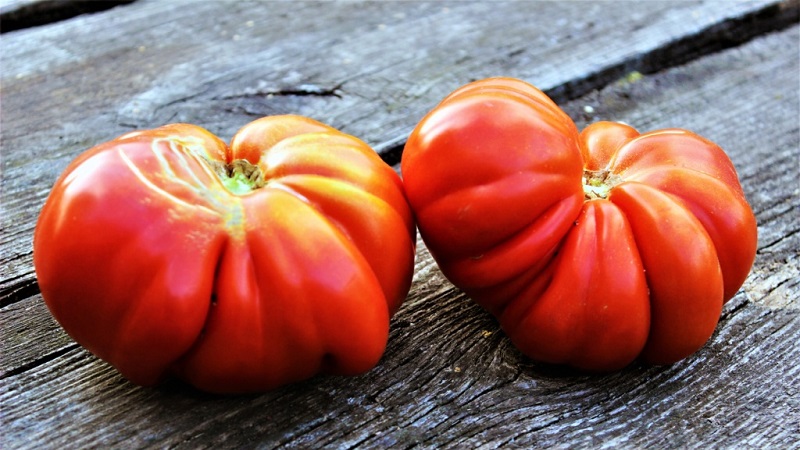
How to grow seedlings
Sowing seeds begins 2 months before planting seedlings in the ground. The soil mixture contains the following components: 2 parts of peat, 1 part of garden soil, 1 part of washed river sand and 0.5 part of humus with the addition of a complex fertilizer with a high content of potassium and phosphorus. The prepared soil is disinfected with boiling water. For looseness, add sphagnum or coconut flakes.
Seeds are sown in a common wooden box or individual containers. Before planting, disinfection is carried out in a weak solution of potassium permanganate for 20 minutes. To improve germination, the grains are soaked in a growth stimulator overnight. After the dried grains are laid out on a wet cloth and left in a warm place for sprouting.
Reference! While the seeds are in a wet tissue for 3 days, the temperature changes sharply: overnight the grains are left on the lower shelf of the refrigerator, and during the day they are transferred to a warm place again. This kind of early hardening will not only increase germination, but in the near future will help to better adapt to outdoor conditions.
Planting depth - 1 cm.The distance between the holes is 3 cm, between the rows - 1.5 cm. After sowing, the ground is leveled from above and moistened with a spray bottle.Then the containers are covered with film or glass and left in a room where the air temperature is at least 23 degrees.
Reference! Tomato variety Buffalo Heart is not a hybrid, so you can select seeds for the next planting yourself.
The first shoots appear 7 days after sowing the seeds. When 2 true leaves appear on the sprouts, a pick is carried out into separate containers. These can be plastic cups, peat pots, or seedling pots. The only condition: both the boxes and the individual containers must have drainage holes.
When the first shoots appear, the seedlings are rearranged in a lighted place, for example, on a windowsill. The duration of daylight hours should be at least 12 hours.
Attention! The first three days, the seedlings need round-the-clock lighting.
Pour with settled water at room temperature as needed. After picking - once a week, after the appearance of 5 leaves, the number of watering increases up to 1 time in 4 days. The main thing is to make sure that the soil is not waterlogged.
After 2 weeks, the sprouts are fed for the first time with complex fertilizers, for example: "Master", "Agricola".
2 weeks before planting in a permanent place, the seedlings begin to harden. Despite the fact that the culture was created in the harsh northern region, the seedlings look weak. Those who sow seeds of this species for the first time initially think that the seedlings did not work out or are sick. But do not be intimidated by the appearance of the seedlings. Oddly enough, but soon young bushes grow stronger and successfully survive in any weather conditions.
The hardening process is reduced to the presence of seedlings in the open air, starting from 2-3 hours and gradually increasing to 1 day. At the same time, the night temperature of the room where the seedlings are introduced at night should drop to 14 s.
How to grow tomatoes
After 2 months, when the sprouts are at least 30 cm high and have 7-8 leaves on them, they are ready for transplantation. And again, do not be afraid that the seedlings are tall, long and seemingly unhealthy. One has only to transplant them into open ground, as they begin to strengthen.
Transplant seedlings into the ground after the threat of the last frost, when the weather is warm. Basically, this is mid to late May.
The culture loves loamy soil, previously fed with organic matter or minerals. Planting scheme: 3-4 seedlings per 1 sq. m. Wells are well watered and sprinkled with ash.
To the ovaries, watered 2 times a week with a small amount of settled water. During ripening, the fruits are watered more often and more abundantly. Watered at the root, otherwise the likelihood of fungal infections increases. Waterlogging of the soil negatively affects the taste of tomatoes, they become watery.
To keep moisture in the soil longer, the beds mulch.
From day 10, young bushes begin regularly feed... During the period of growth and development of bushes, nitrogen fertilizers act as top dressing. They promote healthy growth and green mass development. During flowering and ovaries, fertilizers are changed to potash and phosphorus.
Organic matter - bird droppings or mullein infusion - is considered a universal fertilizer: it contains all the necessary nutrients. Organic fertilizing works well for plants throughout the growing season.
After watering, it is necessary to loosen and remove weeds with roots. Loosening contributes to the heating of the earth and its saturation with oxygen. Hilling bushes helps oxygen to penetrate to the roots, which has a beneficial effect on the growth and development of the bush.
Culture requires compulsory pinching. It is recommended to keep the bushes in 2 stems. This means that all side brushes are removed. In this case, nutrients are spent on the formation and mass of the vegetable, and not on the growth of unnecessary branches. Stepping is carried out once every 10 days.
Despite the fact that the species is undersized, the garter of the brushes is required. Which is not surprising considering the weight of the fruit.The garter is held to wooden stakes placed next to the plants.
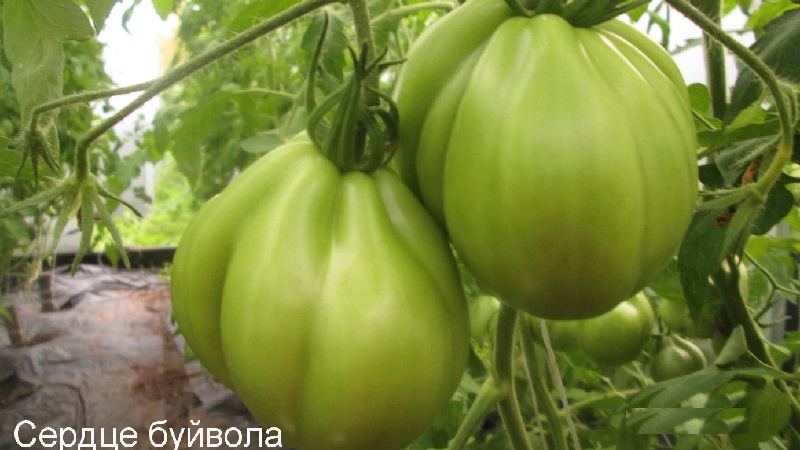
Diseases and pests
The vegetable culture has established itself as unusually resistant to diseases typical of the nightshade family. It is also resistant to attacks from insect pests.
Therefore, it remains only to briefly mention the necessary preventive measures in the event of a mass invasion of pests. And fungal spores can take completely unprotected plants by surprise. Prevention measures are a kind of barrier, a barrier to infection.
From phytophthora "Fitosporin" is a good obstacle. It will not save the plant from disease, but will also destroy the cause of the disease. Alternative options - "Quadris" or "Revus".
There are many alternative methods for parasites that are no less effective than insecticide treatment. For example, the tobacco dust, which is used to cover the beds, repels insects. Treating the stems with soapy water is good for aphids. Spraying with a weak vinegar solution scares away insects with a pungent odor, as does planting odorous herbs next to tomatoes.
The nuances of growing in open ground and in a greenhouse
The species adapts equally well to both field and greenhouse conditions. The choice of the landing site is influenced by the climatic features of the region.
In the greenhouse, the growth of determinant bushes will be higher than on the street. Here, their height can reach 1.2-1.8 m. If necessary, pinching the crown of the plant is done, which determines the final point of growth.
Plants are planted in a greenhouse 2-3 weeks earlier, which makes it possible to pick the first ripened vegetables in June.
Remember to regularly ventilate enclosed spaces. This protects the plants from fungal diseases and insect pests.
All tomatoes like moderately sunny places, protected from strong winds. Accordingly, open beds should not be blown out. However, a light southerly breeze blowing through the beds will protect them from disease-causing fungi and contribute to pollination.
Harvesting and application of the crop
The first ripe vegetables are in mid - late July, and, thanks to the extended fruiting, the collection of ripe vegetables continues until the end of summer. It is not difficult to collect large tomatoes from tied brushes. But if the branches are not tied up, the fruits will have to be picked up from the ground along with the broken branches.
Since the culture belongs to salad, its best culinary use is in fresh salads. Also, tomatoes are fried with scrambled eggs and baked with meat. It is when used fresh that vegetables reveal their full range of flavors.
Due to their large size, vegetables are not used for canning, but they are quite suitable for processing for winter preparations. Among tomato products, the juice is especially noted, thick and tasty, where tomatoes preserve gastronomic properties best of all. Also, lecho, ketchup and adjika are made from the fruit.
Vegetables are subject to long-term storage and perfectly retain their appearance during long-term transportation. These qualities allow them to be used for commercial purposes, which is of no small importance for farmer entrepreneurs. Other advantages for commerce are the high fruiting rate and the high weight of the vegetables.
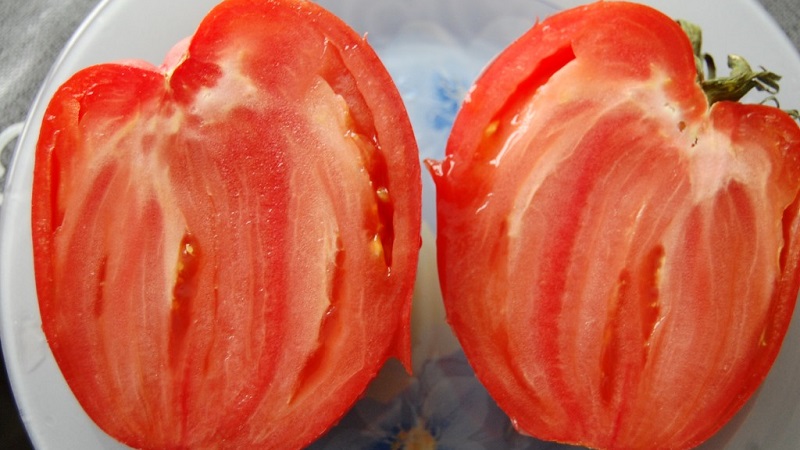
Advantages and disadvantages of the variety
The following advantages can interest many tomato lovers who want to get high-quality tomatoes that do not require complex maintenance:
- high level of adaptation in all regions;
- the ability to tolerate short-term drought and cold snap;
- high resistance to diseases;
- unpretentious care;
- undersized bush;
- extended period of fruiting;
- high quantitative and qualitative indicator;
- large fruits;
- excellent taste;
- long storage of ripe vegetables;
- excellent transportability;
- the ability to independently select seeds for planting.
Several minor disadvantages of this type:
- weak seedlings;
- garter required;
- pinching is required;
- inability to use for whole-fruit canning.
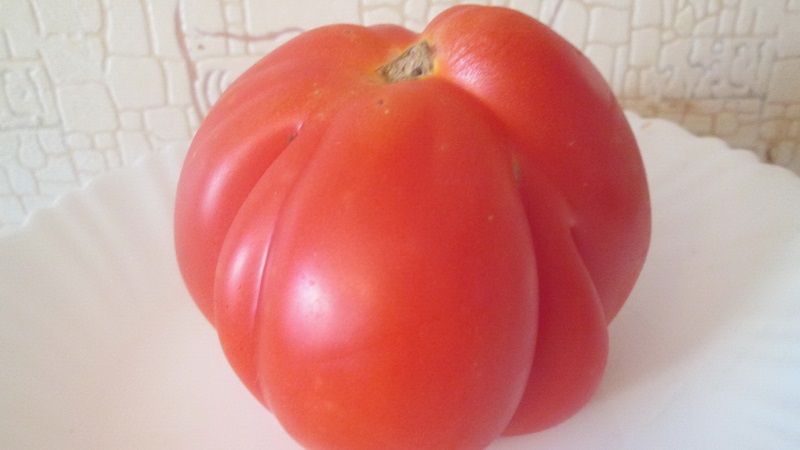
Farmers reviews
Of course, many gardeners are satisfied with large harvests with minimal effort. You don't even need to dream about the best: planted, watered, fed and after 2 months - an excellent healthy offspring. One tomato is enough for a salad or main course. And you do not need to worry if, for some reason, it is not possible to water the tomato crop in time on a hot summer day. She will calmly endure such a misunderstanding, preserving the external and taste qualities of her fruits.
Pavel, Kemerovo: “Excellent tomatoes. From year to year I grow it in the open field. Even with an insufficiently warm summer, you can get a lot of vegetables. The very first are the largest. In a brush - 4-5 pieces. The main advantage for me is that I collect seeds myself for the next year. "
Olga, Lipetsk region: “I grew it under the film, sowed it in February. The vegetables ripened in early June, tasty, large. Compared to other varieties sown at the same time, they turned out to be the earliest. The result was impressive, I will plant again ”.
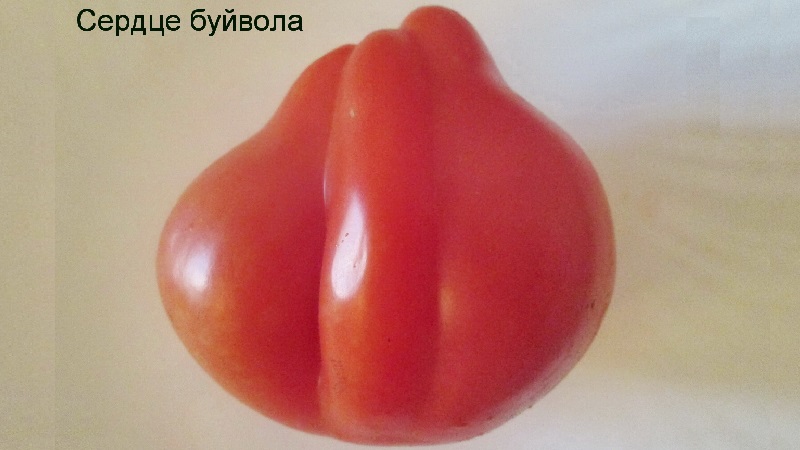
Conclusion
Numerous reviews about the Buffalo Heart tomato leave no doubt about the reliability of the innovative variety. High yield, excellent taste and size of fruits, extraordinary resistance to diseases and simple agricultural technology - these are the main advantages of the culture. Thanks to them, the summer will be remembered for pleasant summer cottage chores, and not exhausting labor in the garden.